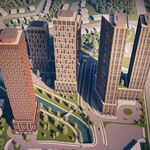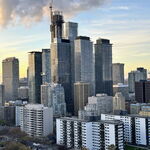TheTigerMaster
Superstar
Perhaps orange MiWay express lines could be added to the subway map also.
The York University Bus and 501 Long Branch should also be on the map.
Perhaps orange MiWay express lines could be added to the subway map also.
I can see a case for the 196 York University Rocket, which runs mostly on it's own dedicated lanes or busway. But I'm not seeing the logic for the 501 Long Branch.The York University Bus and 501 Long Branch should also be on the map.
I think you are mistaking Queensway for Lakeshore.The steetcar on Lakeshore is very, very fast.
Neither is the Brown line in Chicago, it would be disturbing if it didn't show up on their maps.
Okay, I'll bite.
How is the Brown Line NOT a rapid transit line, when it is built to the same standards as all of the rest of their other lines, and uses the same equipment?
It doesn't really matter, because that Wiki page is clearly wrong. It meets the definition of Rapid Transit of other wiki pages and a Canadian dictionary. The page on that line in particular - http://en.wikipedia.org/wiki/Brown_Line_(CTA) - refers to the Brown Line as being rapid tranist.It crosses a few intersections at grade, regularly hitting cars driven by people who aren't paying attention to the crossing. Hilarious setup for a 3rd rail based system, but I don't think it meets the definition of rapid transit provided by that wiki page.
Your just making that up. The existence of grade separations has no bearing on the velocity of the vehicle - at least not at the speeds we're talking!At grade crossings formally remove it from the rapid transit designation, but like so many things, it's not black and white. It's operationally rapid transit if not technically.
It crosses a few intersections at grade, regularly hitting cars driven by people who aren't paying attention to the crossing. Hilarious setup for a 3rd rail based system, but I don't think it meets the definition of rapid transit provided by that wiki page.
And somehow Wikipedia is the be-all, end-all source of knowledge to all mankind? Please.




